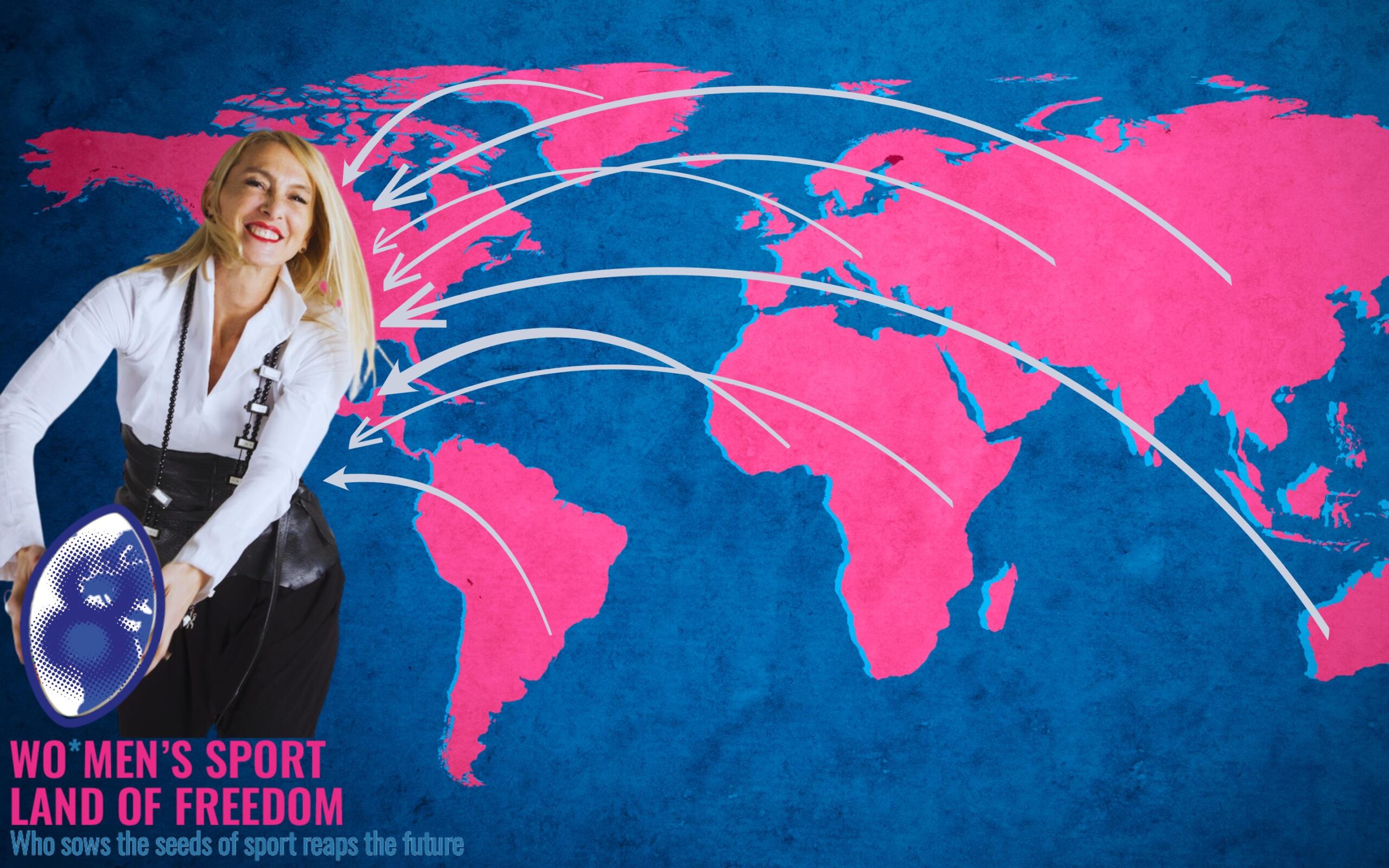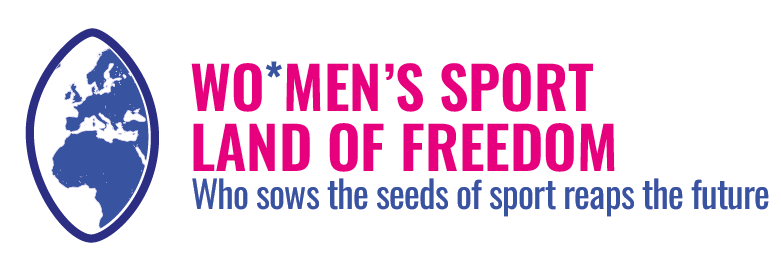
BRAZIL: WE BREAK THESE STEREOTYPES SIMPLY BY PLAYING, TALKING ABOUT THEM, AND SHOWING THAT WOMEN CAN DO ANYTHING.
“We break these stereotypes simply by playing, talking about them, and showing that women can do anything”
Beatriz Futuro Muhlbauer

Wanderleia Jentzsch (Leca)

Thanks to:
Beatriz Futuro Muhlbauer
Former 7’s Olympic, Resp.WOmen’s development
Wanderleia Jentzsch (Leca)
:Project manager “NINA RUGBY”
- The history of the women’s movement in Brazil
- Testimonials
- Reading Time: 8 minutes
BRAZIL - Find out more
HISTORY OF THE COUNTRY
1. When did the women’s rugby movement start in your country, and what is its history? How is rugby structured in your country?
Women’s rugby in Brazil had a symbolic beginning in 1987, when pioneering players challenged a male-dominated environment by taking the field during the traditional SPAC tournament (São Paulo Athletic Club). At that time, marginalization was evident: the match was scheduled during halftime of the men’s game and played on only half the pitch, reflecting the barriers imposed on women in sport. It was only in the 1990s that women began organizing more formally. By 1997, the first women’s teams emerged in different regions of Brazil, such as Desterro (SC), Niterói (RJ), and São José (SP), showing the resilience of athletes determined to carve out their space. Despite their efforts, development faced difficulties: lack of investment, limited competition opportunities, and little visibility. The first women’s tournaments, organized in 1998, represented a major step forward but also highlighted historical inequalities in access to the sport. While men’s rugby already had a consolidated structure, women had to fight to create their own leagues and competitions. This illustrates how sport reflects broader social dynamics, where female participation was treated as secondary and dependent on women’s persistence to gain recognition. Records show that women’s rugby in Brazil started around 1997 in Florianópolis (SC) with the formation of two teams: Barra Rugby Club and Desterro Rugby Club, the latter already well established in men’s rugby (CHAGAS, 2007). Most of the first women’s teams were composed of friends, partners, wives, or sisters of male players, attracted by the game’s dynamism, values, and challenges while attending men’s training sessions. Initially, they trained wherever space was available, often in inadequate conditions, waiting for men’s training—which lasted two to three hours—to finish. Gradually, they gained strength and numbers, but not enough to play in the XV format, which required about 30 players per team. As a result, women’s rugby in Brazil developed mainly in the sevens format, requiring fewer players.
However, the history of women’s rugby in Brazil remains poorly documented, reflecting wider gender inequalities in sport. Official sources, like the Brazilian Rugby Confederation (CBRu), have historically focused on men’s rugby, which has been recorded since the 19th century and experienced strong development in the 1960s and 70s, particularly at the university level.
2. Do you think playing rugby has a social impact for women in your country?
Yes, rugby has a significant social impact for women in Brazil, especially in countering structural inequalities and gender stereotypes in sport. Historically, women have faced barriers to participating in contact sports, but initiatives like Projeto Nina demonstrate rugby’s transformative potential in promoting gender equality.
By creating opportunities in training, leadership, and sport development, the project strengthens female participation not only as athletes but also as coaches, managers, referees, physiotherapists, and other key roles. Women’s rugby also promotes inclusion by offering a safe community, self-esteem, resilience, and teamwork—skills essential both on and off the field.
3. In your opinion, what can rugby give to women in your country?
Rugby offers Brazilian women much more than a sport: it is a platform for personal, professional, and social growth. It opens access to different careers, including elite competition, refereeing, coaching, and sports management, thereby increasing female representation in key decision-making roles. Initiatives such as Projeto Nina reinforce this impact, actively fostering female leadership development and inclusive environments. Through technical training, networking among women in sport, and recognition of female contributions to rugby, the project consolidates women’s presence in Brazilian rugby. Thus, rugby not only empowers women but also acts as a catalyst for social transformation, advancing the pursuit of gender equality in both sport and society.
JOURNEYS THROUGH RUGBY (Beatriz Futuro)
1. What has rugby taught you that has had an impact on your daily life? Can you give an example of when a rugby mindset was useful to you?
“Rugby teaches you resilience. You fall, you get back up, and you keep going. […] People may try to bring you down or doubt your dreams, but rugby teaches you to come back stronger than before. We break these stereotypes simply by playing, talking about them, and showing that women can do anything.”
2. Can you give me three words that connect rugby with freedom?
Equality. Respect. Determination.
“If we are respected, if we are in a safe place, then we are free to enjoy the game.”
3. What does it mean to you to live in a land of freedom?
“Women’s rugby can achieve results even stronger than men’s rugby in some areas. We are fighting against entrenched machismo… not only in Brazil.”
4. Which object represents you and why? What is a quote that guides your life?
“This small rugby ball. A friend gave it to me, and it reminds me of all the friendships born through rugby. Keep your eyes on your goal and don’t let distractions pull you away.”
(In Portuguese) “Não perca de vista o seu propósito.”
